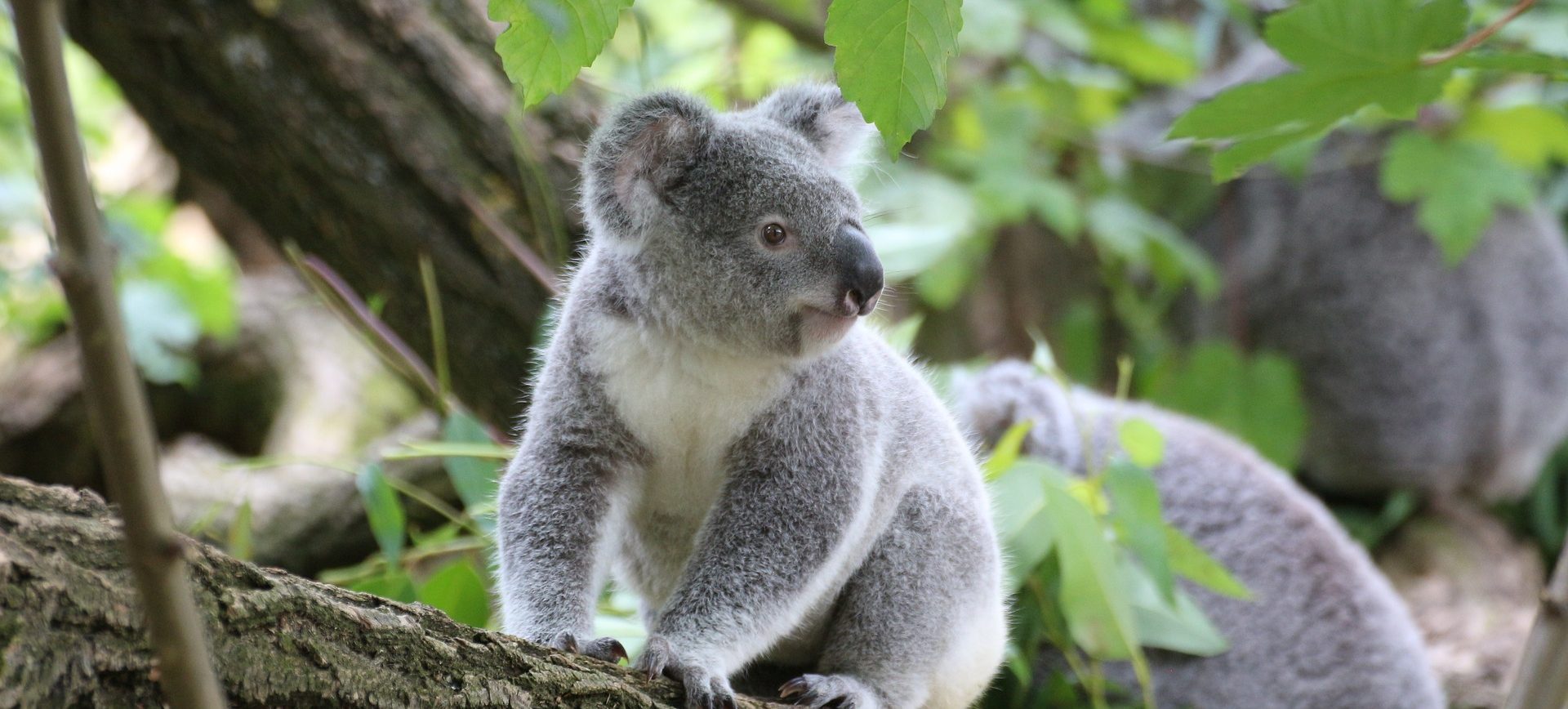Recently I listened to a podcast, which is something that, due to struggling to concentrate, I haven’t been able to do for a long time. I also did a little gallop, as if riding a horse, and that’s another thing I haven’t had the strength to do in a long time, and that was also cool.
BEFORE I GET LOST ON A TANGENT – the podcast I listened to was all about koalas, because they’re one of my favourite animals. One of my favourite things to do is to try and recall facts from podcasts, so I thought it’d be fun to share some of my newly accquired knowledge!!
KOALAS
Name: Phascolarctos cinereus – Koala
Type: Mammals – marsupials (similar to bears but have a pouch for offspring)
Diet: Herbivores (technically folivores – specialised herbivores who eat leaves)
Size and Weight: 23.5 to 33.5 inches, 20 pounds
Habitat: Australia
Lifespan: 20 years
Koalas are one of Australia’s iconic animals, and are endemic (native and restricted) to the country. Their name is thought to mean ‘no drink’ in the Aboriginal language, due to how they drink little water (taking in the majority of the water they need through Eucalyptus leaves). They are stocky, have non existent tails, and have coarse wool fur (a bit like sheep), and have 5 digits one each hand, including opposing thumbs, allowing them to grip things. They have two toes fused together, on their feet, which they use to comb their fur, and are known for their very cute appearance!!
Habitat: Koalas only live in Eucalptus forests, and are found in three regions of South Eastern and Eastern Australia. Those in the Southern parts are larger with thicker fur, to help them deal with colder winters, but they are not a separate subspecies.
The Queensland koala is the smallest, with shortest skull, and shorter, silver fur, and the Victorian koala is the largest, with shaggier, brown fur, and wider skull. The New South Wales koala lies somewhere between the two.
The Eucalptus tree is their sole source of food, and they may eat more than a pound of the leaves a day. Because the plant is toxic, their digestive systems work hard to digest it, breaking down the toxins and examining the limited nutrients.
Behaviour: These animals sleep most of the time, for around 18 hours a day – this is partly because they do not get much energy from the leaves they feed on. When they are awake, they are nocturnal.
Each koala will have a ‘home range’ or set of trees that it visits regularly, overlapping with other koalas, but will also have it’s own home of trees, which are off limits to other koalas, unless they are breeding. Sex, age, social position and habitat quality will influence the size of a koala’s home range. Females will use urine to mark their territory, while a male will rub his torso on the tree, releasing a dark sticky substance from the gland in the centre of his chest.
They communicate with eachother through a range of noises, including loud snores and bellows.
Reproduction: Koalas reach reproductive age at about 2 years old, and males are sexually mature about four. They give birth to one joey a year, normally.
When the joey is born, it is furless, and roughly the size of a kidney bean. It will climb into it’s mothers pouch, attach itself to one of the two teats which swells in its mouth, and then stay for around six months, drinking only milk. A few weeks before it is ready to come out of the pouch, it will begin to feed on ‘pap’; a sticy substance the mother releases which passes on special micro organisms into the joey so it is able to digest (toxic) gumleaves.
When they venture out of the pouch, the joey rides on the mother’s abodmen or back, returning to her pouch for milk, until it is too big to fit inside. A joey will leave it’s mother’s home range between 1 and 3 years old, when the mother has her next joey.
Conservation: Because they were previously hunted for their fur (late 19th and early 20th century), and also due to deforrestation (land clearing, logging, bushfires), koalas are now listed as vulnerable by the IUCN (International Union for the Conservation of Nature). There have also been warnings about the impact of climate change on their population numbers because of how increasing levels of CO2 are decreasing the nutritional quality of Eucalyptus leaves (meaning some of the remaining suitable habitats for the creature are no longer sufficient), and cause more droughts and wildfires. When droughts occur, koalas may come down from trees to find water, which requires intensive energy for them, and puts them at risk of predation (by animals such as dingoes and large owls).
Other factors affecting their numbers are chlamydia (which can cause blindness, infertility, and death), and getting hit by cars.
Other Fun Facts:
- They have an excellent sense of smell to detect toxins in Eucalyptus leaves and detect other koalas’ scent markings
- They are the one of the largest arboreal (tree climbing) marsupials
- Males are 50% larger than females, so they are sexually dimorphic
- They have small brains and as a result have limited ability to perform complex, unfamiliar behaviours
- They have a special vocal organ, allowing them to make interesting sounds
- They have poor vision and relatively small eyes.
I really like thinking about an animal that climbs trees, is so cute, and that stays quiet most of the time – but when it is vocal, IS UNEXPECTEDLY LOUD. Koalas are like quietly cool, and very special. They’re misunderstood..and definitely unappreciated.
